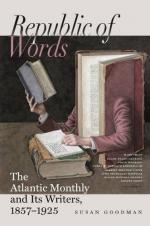The class of landscape-painting which deals with morning and evening phenomena, and is based upon the fleeting and transitory, is the only one that finds representation at present in Italy. Mr. Brown has developed new and peculiar strength since his return to America, and must require place from his new stand-point. Abel Nichols, whose copies of Claude were so truthful, and whose original pictures ever strove to be so, who through surpassing sacrifice became great, who lived, if ever man has, the wonderful Christ-life, now sleeps the sleep of peace, the last peace, under the sod of the landscape of his nativity.
There remains to be considered a series of undeniably remarkable pictures, executed in Rome by John Rollin Tilton.
This artist’s landscapes are remarkable for the conflicting effects which they have produced on the public. They have excited, as they have been exhibited in his studio in Rome, great enthusiasm, and admiration which would listen to no criticism. Until perhaps the present year, which is one of prostration in Rome, his works could not be purchased, each one being the fulfilment of a commission given long before. These commissions were given not by men merely wealthy, but by men widely known for cultivation, discrimination, and for refinement of that taste which requires the influences of Art. On the other hand, men equally as remarkable for their accomplishments in matters of taste have expressed their condemnation of all the paintings of Mr. Tilton, or rather for those executed prior to 1859, and there were those who heaped them with ridicule. In admiration and condemnation we have often shared;—in the sentiment of ridicule never; for in all attempts there have been the hintings of worthy purpose and a desire to excel.
Those who most despise Mr. Tilton’s style and productions are men whose tendencies are to the theories of English pre-Raphaelism. Viewed in relation to those principles, his pictures have little value. The purchasers of them are the men who regard with enthusiastic admiration the evanescent splendors of Nature.
Mr. Tilton’s early ambition was to be the painter to fulfil the demands of this latter class. He not only sympathized with it in its greater admiration for “effects” in Nature, but he found associated therewith an enthusiasm which inspired him with unbounded hope and energy.




